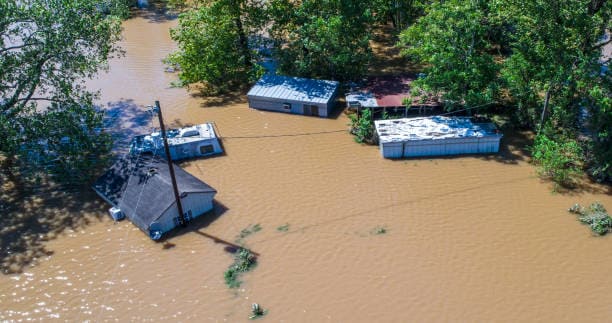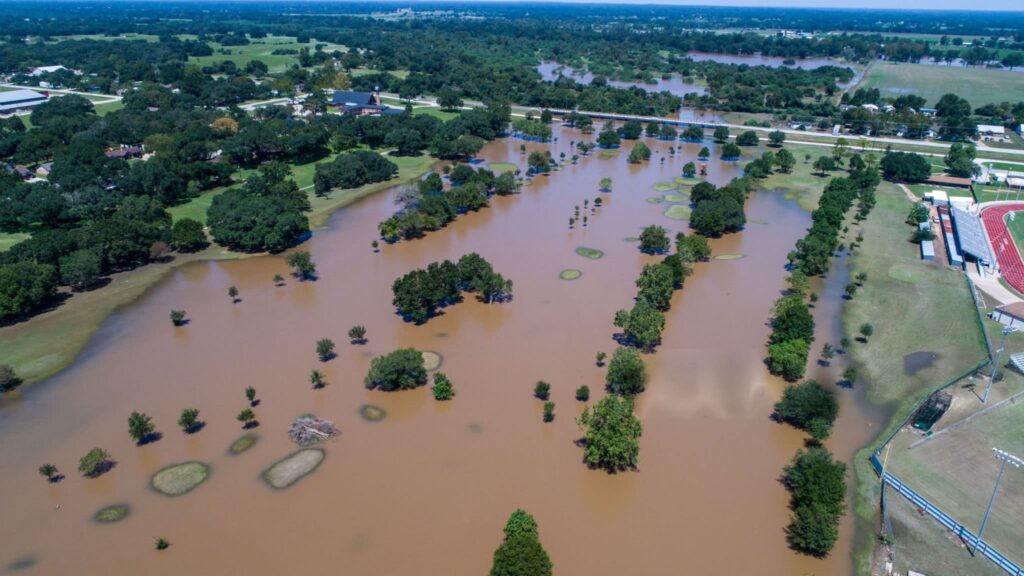Torrential rain ripped through central Texas this week, turning peaceful towns into vistas of destruction as the Guadalupe River burst its banks violently. The torrential rain started as just that, but soon evolved into a lethal emergency as flash floods swamped homes, roads, and vehicles within minutes. At least 51 individuals perished as of Sunday, with dozens more being reported missing.
The river, which snakes through several inhabited towns like New Braunfels, Seguin, and Cuero, shattered historic flood records, swelling over 30 feet in some areas. The emergency sirens also blared too late in several communities, resulting in chaotic evacuations as residents sought to escape the rushing waters with little warning.
Delayed Warnings and Evacuation Criticized
In the days following the disaster, attention has turned to state and local leaders for what many are condemning as a sluggish and disjointed response. Numerous residents indicated they received no flood warnings or evacuation notices. In a few cases, the loss of power and internet disruption also interfered with communications.
I didn’t hear any warnings or sirens until the water was already in my lounge room,” said Victoria resident Chris Hamilton. “By the time we tried to leave, the streets were rivers.
Particularly small-town officials are venting outrage, saying they were on their own in the flood’s initial critical hours. Some towns relied on local volunteers and fishing boats to conduct rescues before state or federal help appeared.
Victims Trapped in Homes and Vehicles
The grim death toll includes victims of all ages, many of whom were found in their homes or in cars that had been swept away. Emergency responders reported surreal scenes of people hanging from trees, stranded on rooftops, and being swept away in front of their relatives. Several children are among those killed, and a Seguin nursing home confirmed multiple deaths after floodwaters rapidly invaded the facility.

Over 100,000 citizens have been impacted, with homes flattened, infrastructure destroyed, and entire neighborhoods under several feet of water. Many survivors are now sheltering in schools, churches, and recreation centers, with some still awaiting rescue.
Governor Declares State of Emergency
Governor Greg Abbott, in response, has declared a state of emergency in over a dozen counties. He visited impacted communities on Saturday, promising fiscal and logistical support from the state and pledging coordination with federal agencies.
“This is an unprecedented crisis,” Abbott said. “We are mobilizing every available resource to support our fellow Texans.”
Despite such assurances, questions are being raised about why earlier orders of evacuation were not issued. Whether the flood preparedness systems in the state are outdated is also being questioned. Investigations have now been ordered to determine potential breakdowns in emergency communications and infrastructure management.
Climate Change and Infrastructure in the Spotlight
Climate change has been listed by environmentalists and scientists as one of the reasons for the storm’s intensity. Increased temperatures in the atmosphere enhance the prospects of intense rainfall events, a trend that Texas and the southern US have seen rising in recent years.
This is exactly what climate models have predicted more severe, sudden flooding,” said Dr. Lena Hoffman of the University of Texas. “It’s time Texas gets serious about revamping its flood defense infrastructure.”
Low-lying neighborhoods along the Guadalupe River have been known to be vulnerable for years, but funding for levees, drainage, and evacuation planning has been sporadic.
Survivors Share Harrowing Stories
Social media is filled with videos and photos of the sheer scale and terrifying speed of the flooding. Families are wading through chest-deep water, and in one video that has been widely shared, a man rescues his elderly neighbor on an inflatable mattress.
“It was like the end of the world,” Gonzales trailer home resident Sarah Ruiz told the AP, describing how she escaped with just the clothes on her back. “I heard people screaming for help down the street.”
As the waters begin to subside, survivors are returning to find their homes destroyed, and insurance problems, no clean water, and disease are now among their worries.
FEMA Moves In as Public Outrage Mounts
The Federal Emergency Management Agency (FEMA) has deployed assessment teams to gauge damage and begin providing aid. Relief centers are set up in the affected areas, and donations of food, clothing, and medical supplies are being organized.
Public anger, nevertheless, is increasing, especially on the internet. Hashtags #TexasFloods and #WhereWasTheHelp are circulating on social media as citizens demand that state officials be held accountable.
Community activist James Delgado summarized the public sentiment: “We can rebuild homes. But we can’t bring back the 51 lives we lost. We deserve better warnings, better systems, and better leadership.”
What’s Next?
With more rain forecast for some locations and damage still being tallied, Texas is bracing for a long recovery. Cleanup has already begun, and probes into the handling of the disaster are expected in the weeks to come.
The local and state governments come increasingly under pressure to reform, invest in early warning systems, and work more closely with meteorological services. For the families of the 51 deceased, however, these explanations cannot come quickly enough.
Recent News
Elon Musk Launches New Political Movement: “The America Party”
China Speeds Up Implementation of U.S. Trade Deal Framework, Commerce Ministry Confirms
Liverpool and Portugal Star Diogo Jota Dies in Devastating Car Crash Alongside Brother
Musk’s Political Move Triggers Tesla Share Decline
Tragedy in Texas: Over 100 Lives Lost in Devastating Flash Flood
Watch the Texas Flood Videos
